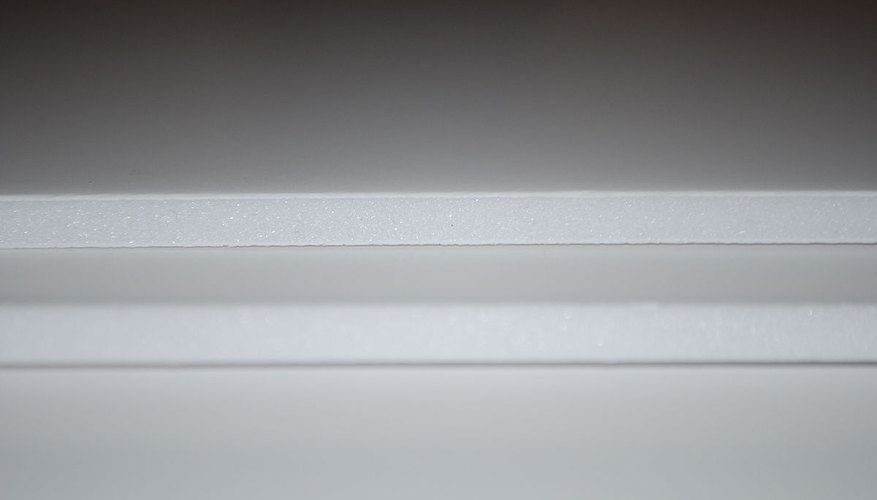Foam boards consist of a slice of foam sandwiched between two pieces of construction paper-style material. If you have children, you've likely seem them use foam board to create visual displays for school projects. In the business world, foam boards are sometimes used as visual aids for presentations. Foam board's properties make it ideally suited to presentation needs.
Weight
Even very large foam boards are surprisingly lightweight, making them easy for even a small child to carry. That's because foam boards are made mainly from a material similar to the foam used in disposable coffee cups. The typical foam board is made with an extruded polystyrene core and two layers of bleached, semigloss, white-clay-coated paper.
Thickness
Foam boards are available in a variety of thicknesses. Some common thicknesses, according to the Foam Board Source website, are the 3 mm (1/8 inch), the 4.5 mm (3/16 inch), the 9 mm (3/8 inch and the 1.2 mm (1/2 inch) boards. All can be used for screen printing, die cutting, mounting and displaying information. The thicker the board, the more stable it will be when standing.
- Foam boards are available in a variety of thicknesses.
- Some common thicknesses, according to the Foam Board Source website, are the 3 mm (1/8 inch), the 4.5 mm (3/16 inch), the 9 mm (3/8 inch and the 1.2 mm (1/2 inch) boards.
Durability
Properly protected from the elements (water and liquids in particular) and from sharp objects, foam boards can last quite a long time. Many are acid-free and flame-resistant. However, because foam boards are essentially paper with a soft foam underneath, they can be easily pierced. This means that a light bump against the corner of a table, or even a bit too much pressure when writing with a pen or pencil on a board, can result in holes.
- Properly protected from the elements (water and liquids in particular) and from sharp objects, foam boards can last quite a long time.
